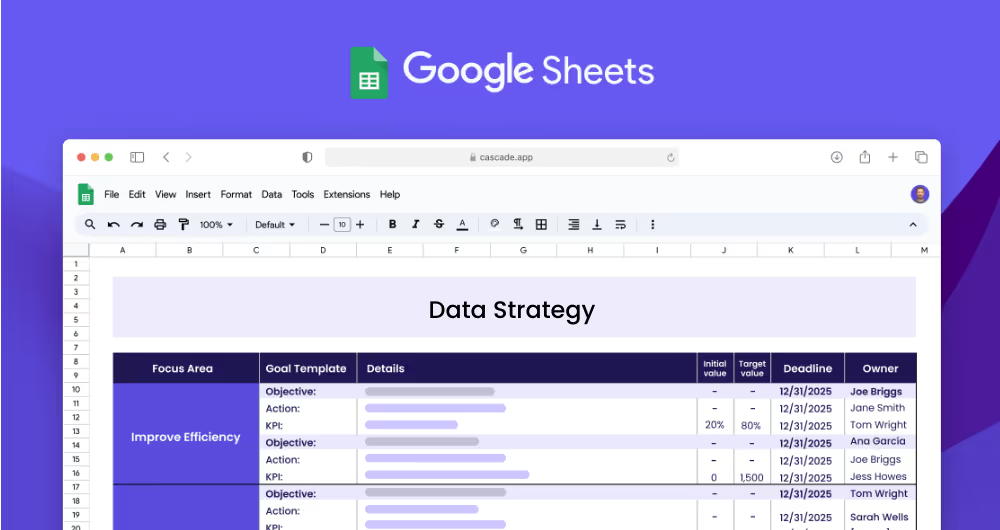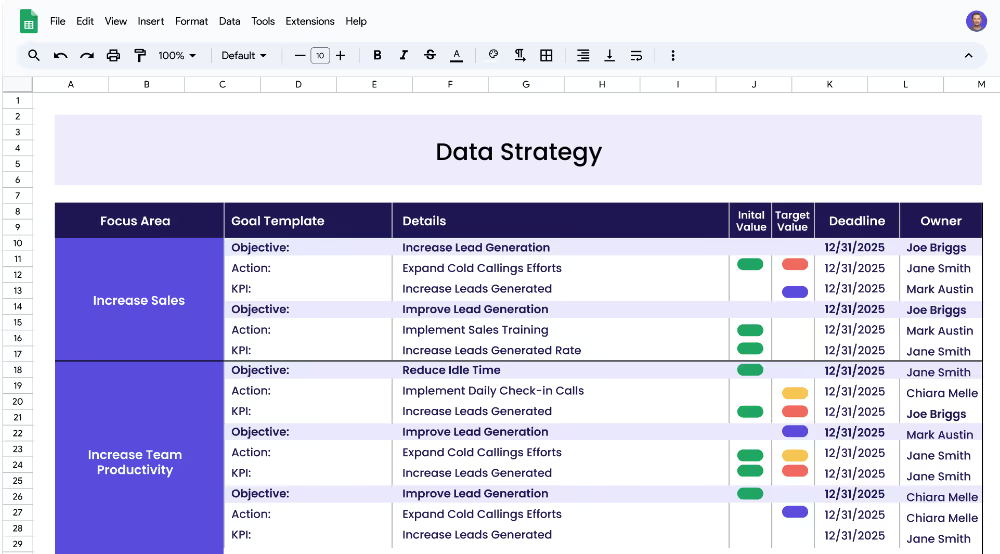A data strategy is a comprehensive plan for leveraging data and analytics to drive business decisions. It outlines how your company will use data to create measurable value and drive growth. The strategy will include collecting, storing, and analyzing data from internal sources, as well as external sources such as customer feedback and market trends. This data can then be used to make informed decisions and better understand customer needs and preferences.
Each focus area has its own objectives, projects, and KPIs to ensure that the strategy is comprehensive and effective.
This Data Strategy Template is designed for organizations of all sizes and industries. It provides a framework for creating a plan to understand how data initiatives will be implemented throughout the organization ensuring you achieve your business goals. With this template, you can develop a strategy that is tailored to your specific needs and objectives, and will give you a roadmap to success.
The first step in creating a data strategy is to define your focus areas. These are the areas in which you will prioritize for your data strategy. This template will help you to develop objectives, KPIs and projects for each of these focus areas to drive successful execution.
Examples of strategic focus areas that could fall under a Data Strategy could be: Leverage data to increase operational efficiency, and Use data for targeted marketing.
Once you have identified your focus areas, you can then think about the objectives that could fall under each one. Objectives are the goals that you want to achieve within each focus area.
Examples of some objectives for the focus area of Leverage data to increase operational efficiency could be: Reduce operational inefficiency, and Increase customer satisfaction.
Once you have identified your objectives, you can then set measurable targets, also known as key performance indicators (KPIs). KPIs will help you to track your progress and measure the success of your strategy. Examples of KPIs include reducing processing time, increasing customer satisfaction scores, and increasing customer engagement rates.
An example of a KPI for the focus area of Leverage data to increase operational efficiency could be: Decrease avg. processing time from 1.5 days to 0.5 days.
After you have identified your KPIs, you can then implement related projects to achieve them. Projects are the actions that you will take to reach your objectives. Examples of projects include automating manual processes, improving customer segmentation, and optimizing pricing strategies.
An example of a project related to Leverage data to increase operational efficiency could be: Automate manual processes.
If you're aiming to elevate your data strategy beyond the typical capabilities of spreadsheets, consider the advanced features of Cascade Strategy Execution Software. Cascade overshadows traditional methods by providing a centralized platform for dynamic strategy formulation, implementation, and real-time monitoring. Embrace a method that offers real-time updates, integrated planning and execution, and the ability to efficiently manage complex, data-driven strategies. Sign-up for free or book a demo with one of our strategy experts to experience how Cascade can transform your strategic outcomes.


